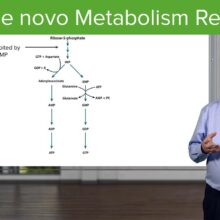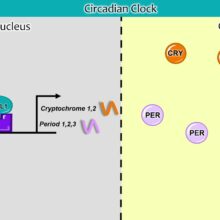Regulation of gene Expression | Lac Operon | Biology
The regulation of gene expression
Gene regulation is the process of controlling which genes in a cell’s DNA are expressed (used to make a functional product such as a protein).
The lac operon
• The lac operon of E. coli contains genes involved in lactose metabolism. It’s expressed only when lactose is present and glucose is absent.
• Two regulators turn the operon “on” and “off” in response to lactose and glucose levels: the lac repressor and catabolite activator protein (CAP).
• The lac repressor acts as a lactose sensor. It normally blocks transcription of the operon, but stops acting as a repressor when lactose is present. The lac repressor senses lactose indirectly, through its isomer allolactose.
What makes the lac operon turn on?
E. coli should express the lac operon only when two conditions are met:
• Lactose is available, and
• Glucose is not available
Structure of the lac operon
The lac operon contains three genes: lacZ, lacY, and lacA. These genes are transcribed as a single mRNA, under control of one promoter.
The lacZ gene encodes an enzyme called β-galactosidase, which is responsible for splitting lactose (a disaccharide) into readily usable glucose and galactose (monosaccharides).
The lacY gene encodes a membrane protein called lactose permease, which is a transmembrane “pump” that allows the cell to import lactose.
The lacA gene encodes an enzyme known as a transacetylase that attaches a particular chemical group to target molecules.
#TheLacOperon
#LactoseMetabolismInBacteria
#MolecularBasisOfInheritance
[ad_2]
Source link





great sir it's very helpful 👍🏿👍🏿👍🏿
👏
Walekumassalam
Jazak Allah
Very well method of teaching!
gene A – for detoxification
Sir why did you delete some lectures in chromosomes and dna?
Thank you so much sir 🙏nice lecture
But chhota sa dout tha
9:25 👈 Sir B-galectosidase…
Lactose ko glucose + galactose m convert krta h
Zabardast, kindly mujay eukaryotic genes ke barey mey guide kerd ey agar mey jey gene function check kerni ho to
Thanks you sir your way of teaching is very nice
Bht Allaw sir
Kmal krty ho ap itna acha smjaty
Thank you sir 🙂🙂🙂🙏🙏🙏🙏🙏🙏🙏🙏🙏
Thanks sir very informative
Thank you sir but what's mean positive and negative gen regulations
Thanku sir
Mosin bhai you are such ❤️ day k 🏀
Mosin bhai….love from india❤️
Gyan badia hai mosin bhai …..modiji likes you
Great bai
ThnkQ Sir
Reprsor bind operator prevent Rna polymerase to creat mrna
Har Har mahadev 🚩🚩
Excellent
Sir apki cap kha se purchase krte ho ap .
Excellent thanks for the clearing my lecture
Excellent💯
👍👍👍👍👍
Why y, z and a alphabets are used for structural gene? One who knows the answer, kindly reply… 🙏
U made it crystal clear for me. Thank you so much.
You are so amazing 🤩💗 method of teaching is excellent….
You explained the whole process in a easy manner 🙌 appreciations from India 👍
Thanks sir ❤️
Bhout bhadhya
Really, you made this topic easy
Thanks alot sir that topic is my presentation in that University it is very help full to meeee thanks alot sir…..🙃